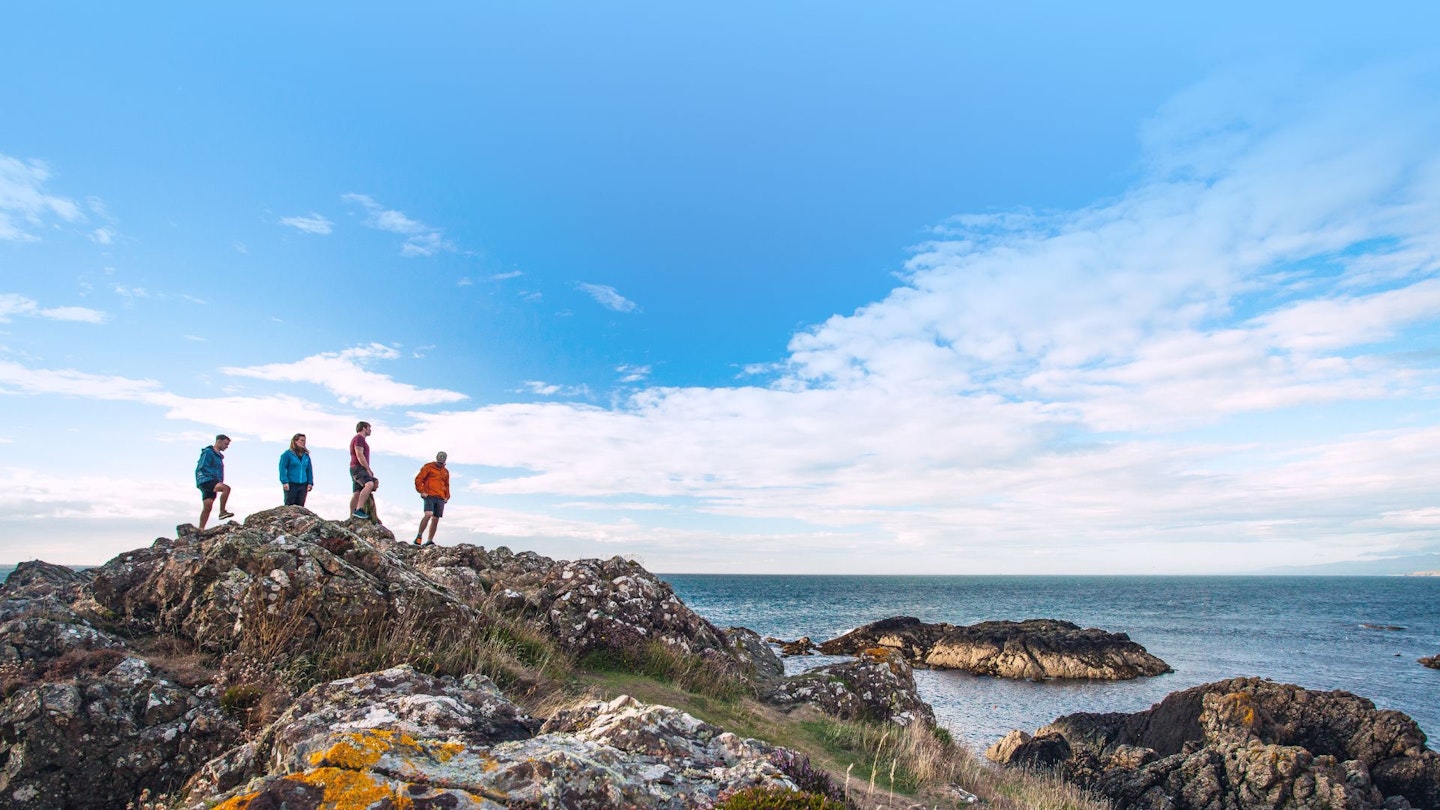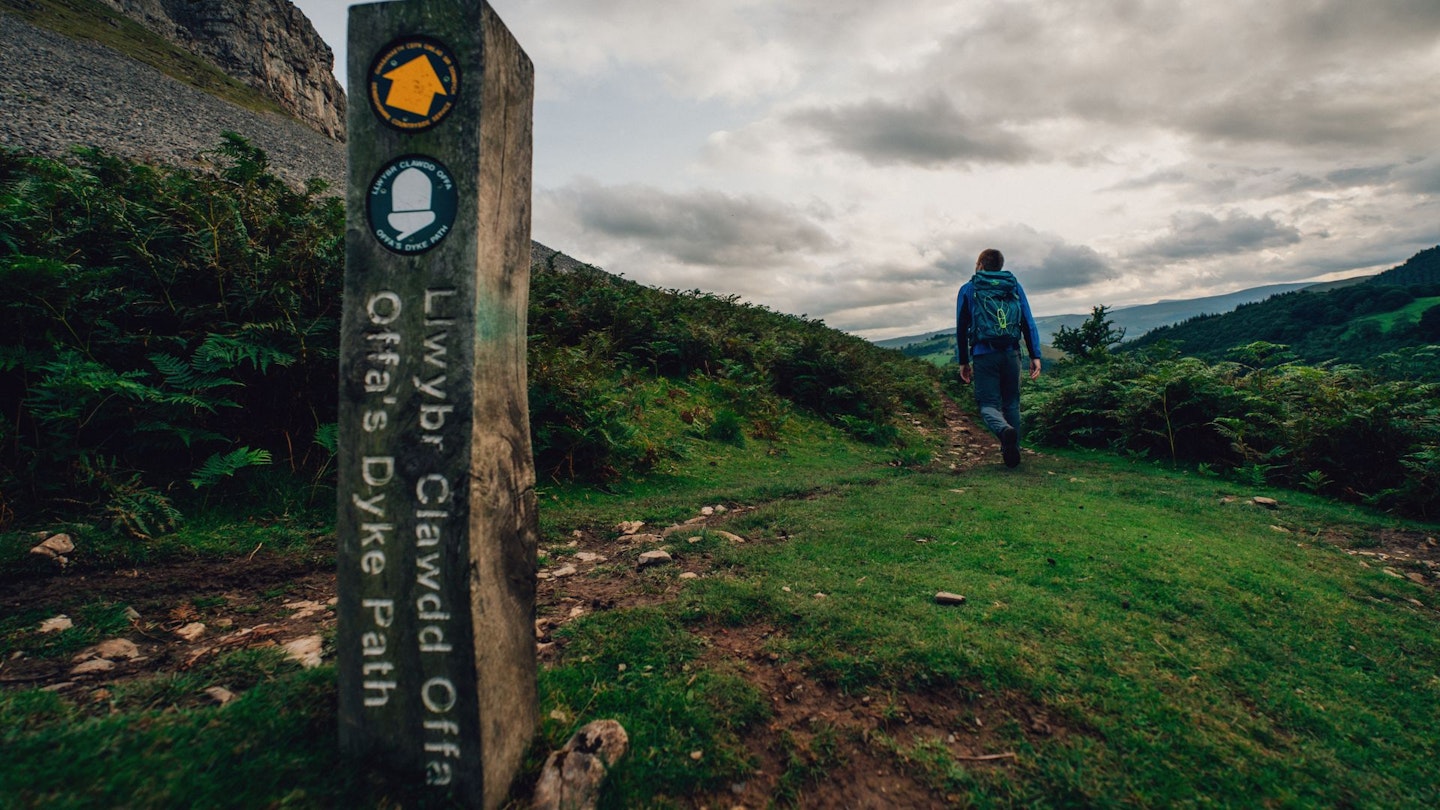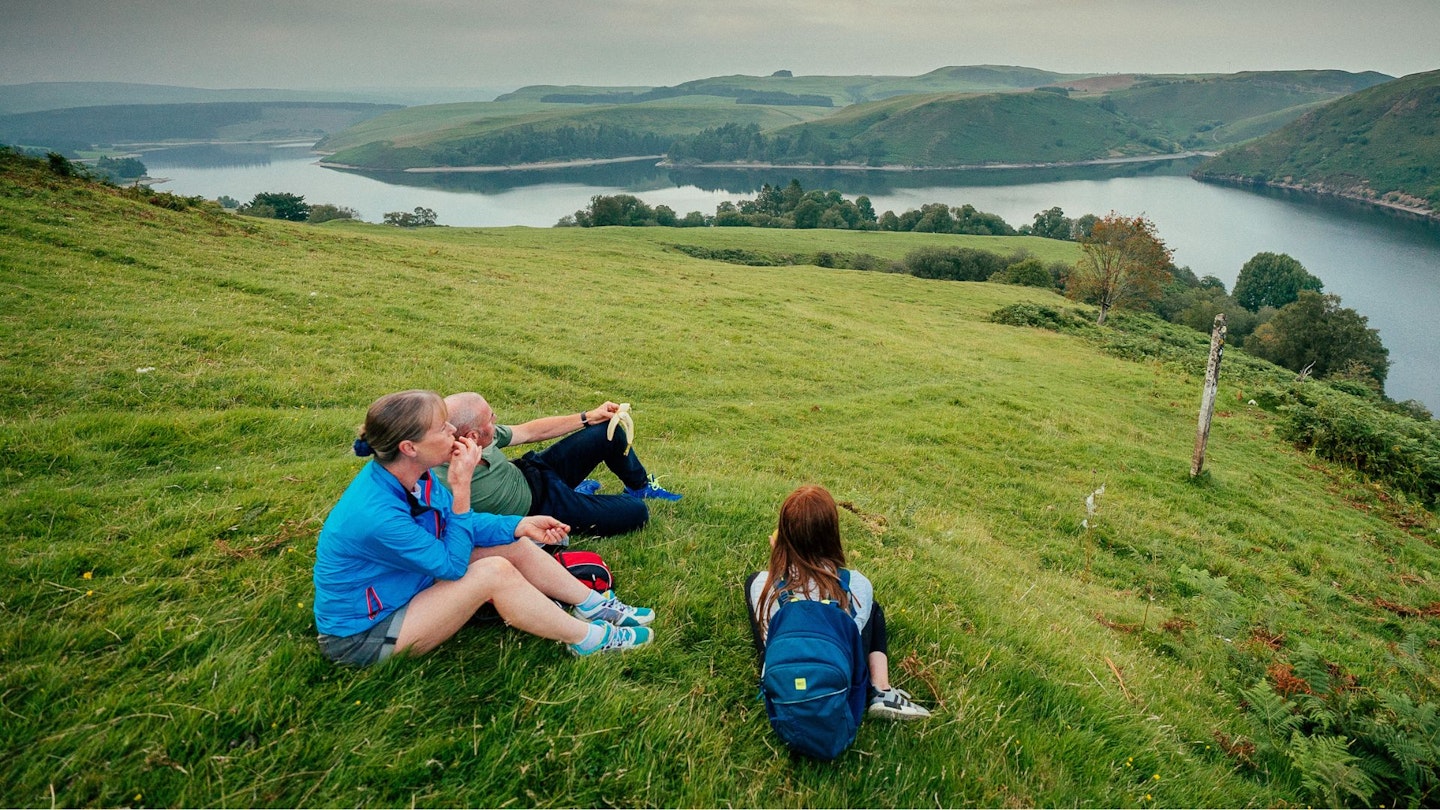Fancy an epic Offa’s Dyke Path or Wales Coast Path hiking adventure? Plan your next walking trip and discover the best train stations to get you straight from rail to trail at Transport for Wales trails.
Wales is a walkers’ paradise – a land of mythical legends, mesmerising landscapes and fascinating culture. From the historic Offa’s Dyke Path to the world class Wales Coast Path, walkers are undoubtedly well catered for in Cymru.
There are three beautiful national parks to explore – the Bannau Brycheiniog (Brecon Beacons) in the south, Eryri (Snowdonia) in the north and the Pembrokeshire Coast in the west.
There's also a myriad of mountains to climb, from towering giants such as Yr Wyddfa (Snowdon), Cadair Idris and Pen y Fan to dinky-but-delightful hills such as Cnicht (the Welsh Matterhorn) and Ysgyryd Fawr (The Skirrid). Or, in other words, you’ll never run out of epic hiking routes in Wales.
Next time you’re planning a walking trip to Wales, why not consider ditching the car? Taking a Transport for Wales train is an eco-friendly, hassle-free alternative to a stressful drive, leaving you free to enjoy the adventure rather than worry about getting from A to B.

Many of the network’s stations are perfectly located as gateways to renowned national trails, walking routes and mountain adventures in Wales, meaning you can simply pack up your rucksack, pull on your hiking boots and jump aboard a train to go straight from rail to trail.
Not convinced yet? Then here are four reasons we think switching to public transport is perfect for your next Welsh getaway.
Why travel by train?
1. It’s far more sustainable
There’s simply no contest – travelling by train to Wales, rather than by car, is infinitely better for the planet, reducing carbon emissions and helping prevent further climate change.
According to National Rail, swapping just one return car journey for an average return rail journey would save 5.7 kg CO2e, which is 68% lower than driving.
2. You might save money

With petrol prices soaring and the all-round running costs of cars spiralling upwards, travelling by train can be cheaper than driving, particularly if you’re a solo driver.
Of course, train prices vary, but if you get organised and book cheap advance tickets, you can often grab yourself a bargain.
3. Sit back, relax and enjoy the journey
While driving can be utterly stressful – especially if you’re stuck in gridlock on the M4 or A55 – you can totally relax into the journey when travelling by train.
Binge on your favourite Netflix series, read the novel you never usually find the time to enjoy, or catch up on some work – the opportunities are plentiful on rail journeys.
4. Trains are rapid, motorways are slow

Often travelling by train to Wales is the most time efficient way to get to the start of a trail. Let’s look at one example: travelling from Cardiff to Prestatyn, where you can easily hop onto the Wales Coast Path or Offa’s Dyke Path, would take 4 hours 10 minutes in the car, but a direct train from Cardiff Central takes just 3 hours 30 minutes – that’s 40 minutes faster.
How do you decide where to go?
Hopefully you’re on-board (pun intended) with the whole concept now, but how do you decide where to go on your next Welsh walking adventure, and how do you figure out the best rail routes and train stations to aim for?
The good news is Transport for Wales have done all of the hard work for you, with easy-to-follow guidance, tips and advice on their website. It’s all very convenient and straight-forward.
You can check out recommended itineraries, study maps to come up with your own crazy expedition plans or simply browse the website for inspiration.

Here at Live For The Outdoors, we’ve given it a go and it all works really well. Want to go hiking in the rugged Rhinogs? The Transport for Wales map shows you can hop on a direct train from Birmingham New Street to Barmouth and hike in from the west.
Want to explore iconic Eryri National Park (Snowdonia)? The website suggests taking the Conwy Valley Line from Llandudno Junction to Betws-y-Coed or Blaenau Ffestiniog; from the former you can even hop on the S1 Sherpa bus and climb Yr Wyddfa (Snowdon), the highest mountain of them all in Wales.
But, better still, you can access some of Wales’ best long-distance trails by train. So why not make a weekend, or indeed an entire holiday, out of your adventures by public transport?
To help you along the way, here are the best way to experience three of Wales’ long-distance national trails – Offa’s Dyke Path, Wales Coast Path and Glyndŵr's Way – by rail.
Three of the best: from rail to trail adventures in Wales
1. Offa’s Dyke Path – 285km, Sedbury Cliffs (Chepstow) to Prestatyn

Running along the English-Welsh border from the Severn estuary in the south to the shores of the Irish Sea in the north, the historic Offa’s Dyke Path national trail is easy to access by train.
Both Prestatyn and Chepstow have train stations, which is super convenient for thru-hikers, or if you want to do day walks in the middle of the trail, the Craven Arms, Church Stretton, Chirk and Ruabon railway stations are perfectly located launching pads.
2. Wales Coast Path – 1,400km, Dee estuary (Chester) to Severn estuary (Chepstow)

Billed as “870 miles of unbroken, unspoilt coastal walking around the entire Welsh coast — making it probably the best walk in Wales”, this monumental hiking route is a true favourite.
Of course, you don’t have to walk it all in one go (although you can if you want!), and there are loads of ways to walks sections here and there, travelling by train. Some of the best access railway stations include Rhyl, Llandudno, Conwy, Holyhead, Tenby, Cardiff Bay and Chepstow, to name but a few.
3. Glyndŵr's Way – 217km, Knighton to Welshpool

Celebrate Welsh cultural and natural history in the footsteps of Owain Glyndŵr, the last native Welsh person to hold the title Prince of Wales, on this peaceful trail from Knighton to Welshpool.
Both the start and end have Transport for Wales stations, with Welshpool connected by direct trains to Birmingham New Street and Knighton connected by direct trains to Swansea via the Heart of Wales line.
For more information, visit Rail to Trail.

